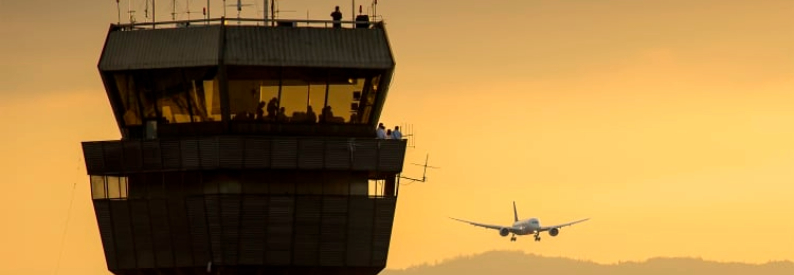Why U.S. Air Travel Could Take Years to Recover from the Government Shutdown

Even as lawmakers inch closer to ending the government shutdown, the impact on U.S. air travel may last far longer — potentially months or even years. The prolonged disruption has exposed deep cracks in the nation’s aviation system, from chronic staffing shortages to overburdened air traffic controllers, and experts warn that recovery will be slow and costly.
A Slow Path to Normal
Until a funding deal is finalized, airlines must comply with the Federal Aviation Administration’s (FAA) emergency order requiring flight capacity cuts at 40 major U.S. airports. The directive mandates incremental reductions, starting at 6% on Tuesday and climbing to 10% by mid-November. Airlines must cancel affected flights seven days in advance — and once canceled, those flights are difficult to reinstate, even after operations resume.
“There are significant challenges with these cancellations inside an airline,” said Eash Sundaram, former chief digital and technology officer at JetBlue Airways and now president of Utpata Ventures. “It’s not easy to randomly cancel 10% of the schedule and still preserve operations. Airlines are going to feel the pain for weeks, and the recovery process happens long after that.”
Aviation consultant and former pilot Kit Darby estimated that, if controllers return quickly, it could take airlines a week or two to stabilize operations. “If the shutdown ends this week, we could be close to fully recovered by Thanksgiving,” Darby said. “But if it doesn’t, the ripple effects could last well into the holiday season.”
Controller Crisis: A Workforce Under Strain
Even after the shutdown ends, the FAA may face a longer-term challenge: getting enough air traffic controllers back on the job. Many controllers, who have worked for weeks without pay, have taken second jobs or left the profession entirely.
Nick Daniels, president of the National Air Traffic Controllers Association, said it took more than two months after the 2019 shutdown for employees to receive full back pay. “Some members have already picked up side jobs and may not return right away,” Daniels said.
President Donald Trump urged controllers to “get back to work, NOW,” on Truth Social, suggesting $10,000 bonuses for those who continued working through the shutdown. Transportation Secretary Sean Duffy echoed that idea, promising to work with Congress on post-shutdown rewards.
Still, Duffy admitted the damage could be long-lasting. Before the shutdown, an average of four controllers were retiring each day; now, that figure has ballooned to between 20 and 25. “We were already short more than 3,000 controllers going into this,” Duffy told CNN. “The shutdown has made a tough situation much worse.”
Training Pipeline Disrupted
The FAA’s controller academy in Oklahoma City — the heart of the training pipeline — has also been disrupted. Although classes have technically continued, funding to pay trainees is dwindling. Duffy warned that some students have dropped out after reconsidering whether a federal job vulnerable to political shutdowns is worth the risk.
Before the shutdown, the FAA said it had met its 2025 hiring goal of more than 2,000 new recruits, with roughly 1,000 additional trainees in the pipeline compared with the previous year. Now, those numbers are in jeopardy. “If the funding to pay trainees stops, it will be cataclysmic,” Duffy cautioned.
Lingering Operational and Economic Fallout
The air traffic controller shortage has already forced airlines to cut flights, limit schedules, and consolidate operations. Even after the government reopens, restoring full capacity will take time — especially since controllers and pilots must undergo recertification checks and scheduling realignments.
“There’s a cascading effect,” explained industry analyst Henry Harteveldt of Atmosphere Research Group. “Once flights are canceled, aircraft and crews are out of position, passengers need rebooking, and the system loses rhythm. The longer this lasts, the longer it takes to unwind.”
If Congress finalizes a deal this week, airlines might have enough time to rebuild schedules before Thanksgiving. But if gridlock continues, Duffy warned that flight operations could “slow to a trickle.” In that case, the nation’s busiest travel season could see thousands of cancellations — and millions of stranded passengers.
A Prolonged Recovery Ahead
Even once the shutdown ends, its aftershocks will persist across the aviation ecosystem — from lost revenue and passenger frustration to a weakened labor pipeline. As Duffy put it, “This shutdown is going to live on in air travel well beyond the day the government opens back up.”
With retirements rising, training delayed, and morale sinking, the United States could face a years-long rebuilding process before air travel fully returns to normal. For passengers, that means higher fares, fewer flights, and more turbulence — long after the political storm in Washington has passed.
Related News: https://airguide.info/?s=FAA, https://airguide.info/category/air-travel-business/travel-health-security/
Sources: AirGuide Business airguide.info, bing.com, yahoo.com, cnn.com
